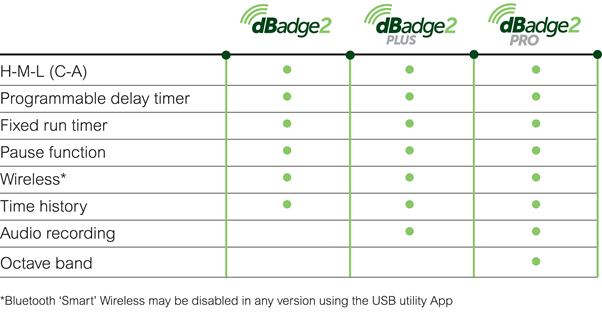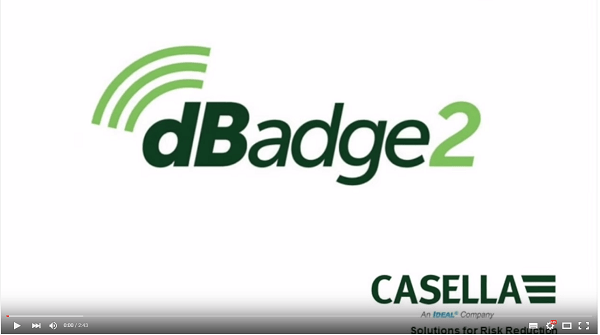Dosimeters in the workplace and which one do we recommend?
Dosimeters in the workplace and which one do we recommend? | |
| Noise Assessment within Australia has become an important part of compliance, and
workplaces are looking to determine definable data to ensure employees are not exposed to noise in
excess of the Noise Exposure Standard. The Noise Exposure Standard contains two parts; • Employees must not be exposed to noise at or above Leaq 8hr 85dB (A) or; • Noise at or above Lc Peak 140dB (C) Leaq 8hr 85dB (A): is a sound pressure level equivalent to 85dB in an (A) filtered frequency range (noise in the frequencies audible to the human ear) over an 8 hour time period. Lc Peak 140db (C): is a sound pressure level which occurs over any length of time when measured with (C) frequency filter. The (C) filter is sound which is audible to the human ear combined with lower inaudible frequencies. Noise measurement can be completed in one of two ways. The first involves using a sound level meter to take spot readings, whilst the second utilises a dosimeter. Each of the methods has their various strengths and weaknesses. However, dosimeters are generally more capable of understanding what a worker is exposed to over the course of the day as they are attached to the shoulder or collar and record for the full period it is worn. They also eliminate the need for further calculation as they calculate the Leaq 8 hour value. When are dosimeters used? Dosimeters are used to estimate noise exposure levels when the noise levels fluctuate over time. This commonly occurs where employees move from area to area. This can be common in engineering workshops, construction and maintenance. What are the advantages of using a dosimeter to test employee noise exposure? -They provide you with extremely accurate data over the course of the employees full work day at all the tasks they are performing. What are the disadvantages of using a dosimeter to test employee noise exposure? -Generally the employee will need to be monitored for the entire period the test is being undertaken. This can result in a significant cost to the workplace. -Employees can potentially tamper with the dosimeter by yelling into them or tapping on them, this will therefore skew the results -People can be tempted to only perform tests for a few hours and then multiply out the results. This results an inaccurate result. The dosimeters we recommend for undertaking investigations Our preference of dosimeter is the newly released dBadge2 series as it offers a full colour display, can be accessed via an App in almost real time and also allows you to email the readings to yourself. There are 3 models in this range and in most cases they will provide all of the readings you need. The key differences between the 3 models are as follows;  There is a video below that gives an excellent run down on the new dBadge2 and how it can benefit you; | |
If you would like to discuss our dosimeter range or would like to discuss the use of a dosimeter within your workplace please feel free to contact one of our friendly Scientists via email or phone on 1300 737 871. | |
See our other newsletter articles here!
Contact our expert scientists now to get the right meter or data logger to suit your needs and discuss your project.
Phone: 1300 737 871
Email: [email protected]

